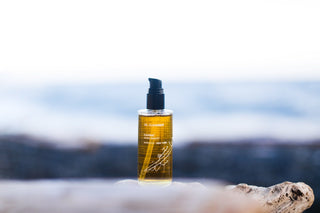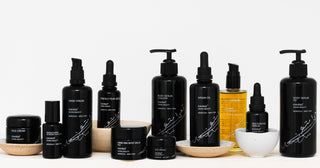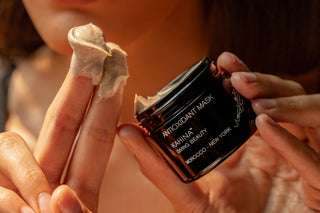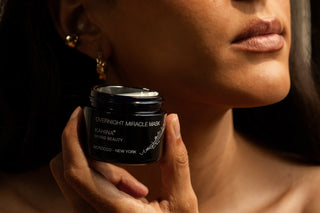At KAHINA™, we have always made authenticity and transparency a cornerstone of our brand. But we realize that sometimes our labels can still be confusing and ingredient lists hard to understand. In this post, I'll break down exactly what our labels mean and why we do things the way we do, step by step.

- It starts simple: Once a formula has been agreed on, our chemist provides us with a complete list of the ingredients that are used in the formula. Sounds simple, right? Not so fast.
- Testing: After the formula has been through rigorous testing for stability and microbiology results are in, the formula may need some tweaking.
- Natural/Organic Certification: Once the formula has passed all testing, we submit the list of ingredients to Ecocert/COSMOS. They look at each ingredient to verify that it meets their standard and provides us with the verified percentages of natural and certified organic ingredients in the formula.
- EU Registration: Then we submit the formula to Biorius, the regulatory authority for countries around the world including the EU, which has banned 1400 cosmetic ingredients (FDA has banned 11). Biorius then analyzes each ingredient as well as its components, ie preservatives, solvents used for extraction, etc., and rewrites our ingredient list based on their findings, listing each component as a separate ingredient. This often results in the addition of several ingredients that weren't listed in the original formula.
- Potential Allergens: Regulations in the EU require us to list potential allergens on our labels. These are compounds found in essential oils (linalool, farnesol, geraniol, citronellol), not added ingredients, and are noted in our ingredient list with this symbol: †
- Organic ingredients are listed with an asterisk: *
- Made from Organic Ingredients: When listed with ** it applies to the glycerin in our products. Glycerin is a compound commonly sourced from animal fat. We assure you that ours is made from vegetable sources.
- We know you probably don't speak Latin: But good for you if you do. We're not trying to make things confusing - the ingredients are required to be listed by their Latin names.






